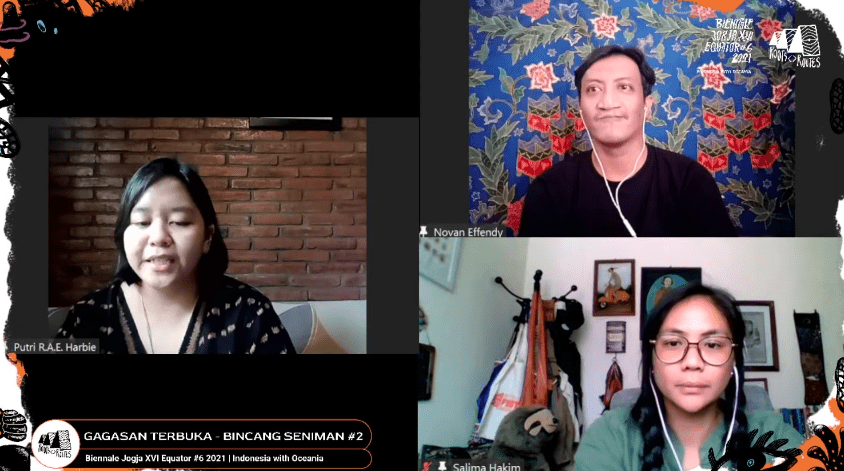
A dim room. In the middle, there is a bed with a mosquito net. It’s not only for lying down, but a foot away stood a table and a set of Damar Kurung painting tools.
“We bring back Masmundari,” explained Novan Effendi from Damar Kurung Institute.
Through Open Idea #2 which was held via Live YouTube on Friday (22/10) at 01.00 p.m, Novan told us about the installation of the Masmundari archive at the Biennale Jogja XVI Equator #6 2021. The idea is to bring Masmundari back into a private room. In addition to being more emotional, the private room is indeed the space used by Masmundari in creating the Damar Kurung painting.
Novan also talked about the economic motives behind Masmundari and Damar Kurung. In a year, he said, Masmundari could paint 300-400 Damar Kurung.
“They sold out in just two hours during the pilgrimage season before Ramadan arrives,” he said.
The phenomenon of Masmundari’s art through a subsistence pattern with his Damar Kurung attracted Salima Hakim’s interest. Salima who is also a guest artist at this Open Ideas commented on “yang-seni dan yang-kerajinan”.
She admitted that it was such comments that started the creation of her work that is now displayed at the Biennale Jogja XVI.
“Why so many masters, but no mistress?” that’s how she claims art history is too “male”. Then she fired the question to the archiving issue.
“If the gender bias problem is in archiving, then I take it further back: the beginning of humanity,” she explained. That’s when Salima began to realize that there is gender inequality in the representation of human history archives. Thus, her work is intended to dismantle the narrative of the established “male” history. So said Salima.
For her, history, even human evolution itself cannot go on without women. “There is a reproductive process that ensures the continuity of species regeneration, and that requires women,” said Salima. Women have been marginalized in history, including art history.
“Like Masmundari, women are often seen as craftsmen rather than artists,” said Salima. This is what makes women’s works excluded from art historiography. Through her installation that uses the art of sewing as a medium, she emphasizes that crafts and arts are equal.
Novan also said that it took a long time for Masmundari to get recognition from the “art world”.
“Masmundari was exhibited for the first time in 1986-1987. At Bentara Budaya Jakarta, to be precise,” he said.
After decades of living with Damar Kurung, she is finally seen as equal to “artists” instead of just “craftsmen”.
The matter should be discussed. That’s what Salima said about the dominant discourse that marginalizes women in the arts.
There needs to be a discourse that said Masmundari and herself and other women are artists. That Damar Kurung and stitching installations are art. Not just craftsmen and crafts.